Dominating Spain and Europe just 20 years ago, Deportivo La Coruña became somewhat of a yo-yo club between Primera and Segunda División in Spain in the 2010s. Yet as the decade came to an end, Depor were at their lowest ebb. Stranded at the bottom of Segunda, they had been in the relegation zone for all but two matchdays since matchday four, having been bottom for nearly two months by the time Fernando Vázquez returned to the club as the team’s third managerial appointment of the season.
It was an appointment which baffled many. Whilst it excited many fans who had fond memories of Vázquez’s first stint in charge, he was very much a journeyman coach with a reputation for a style of football which is far from easy on the eye. His reputation precedes him, falling out with boards and fans alike over his defence-first approach, he rarely lasts long in a single job.
So much so that from 1998 until 2004 he had six different jobs, one per year. A three year stint as Celta Vigo manager saw him out of the game from 2007 until he joined Deportivo, overseeing their relegation for the final few months of his first game only to bring them back to the top flight at the first time of asking in 2014, only to be sacked after criticising their signing policy. A one year stint at RCD Mallorca followed but he would then face more than three years out of employment before returning to Estadio Municipal de Riazor.
This tactical analysis will consider the tactics of Vázquez and provide analysis of the remarkable turnaround he has achieved. Just two league wins all season before he arrived, including an opening day 3-2 victory over Real Oviedo with a last gasp winner, it’s fair to say that Vázquez had his work cut out. However, his tactics have turned things around, securing six consecutive victories in his first six league games to turn Depor from relegation certs to play-off outsiders.
The 5-4-1
From the moment he took charge, Vázquez implemented his 5-4-1 system in order to shore up in defence. Having recorded four clean sheets through four 0-0 draws before Vázquez arrived, it was clear that there was potential in this system to build a strong defence, as long as Vázquez put his attention into the defence.
One of the keys to building that strong defensive record has been consistency. From his first game, Vázquez has looked to deploy the same backline. Eneko Boveda and Salva Ruíz act as the athletic wing-backs who often drop in to form more natural full-backs. In between them are Mujaid Sadick, Michele Somma and Francisco Montero.
Key to their organisation is the role played by Dani Giménez in behind. Boveda is the only man in the defence above the ago of 24, leaving a lack of leadership to coordinate the defensive unit. Whilst Somma in particular has stepped up to the plate, operating as the central figure in the three central defenders, the shotstopper is often the one to command them and organise the defence. That allows Boveda more freedom to move forward and press into midfield when required when in possession.
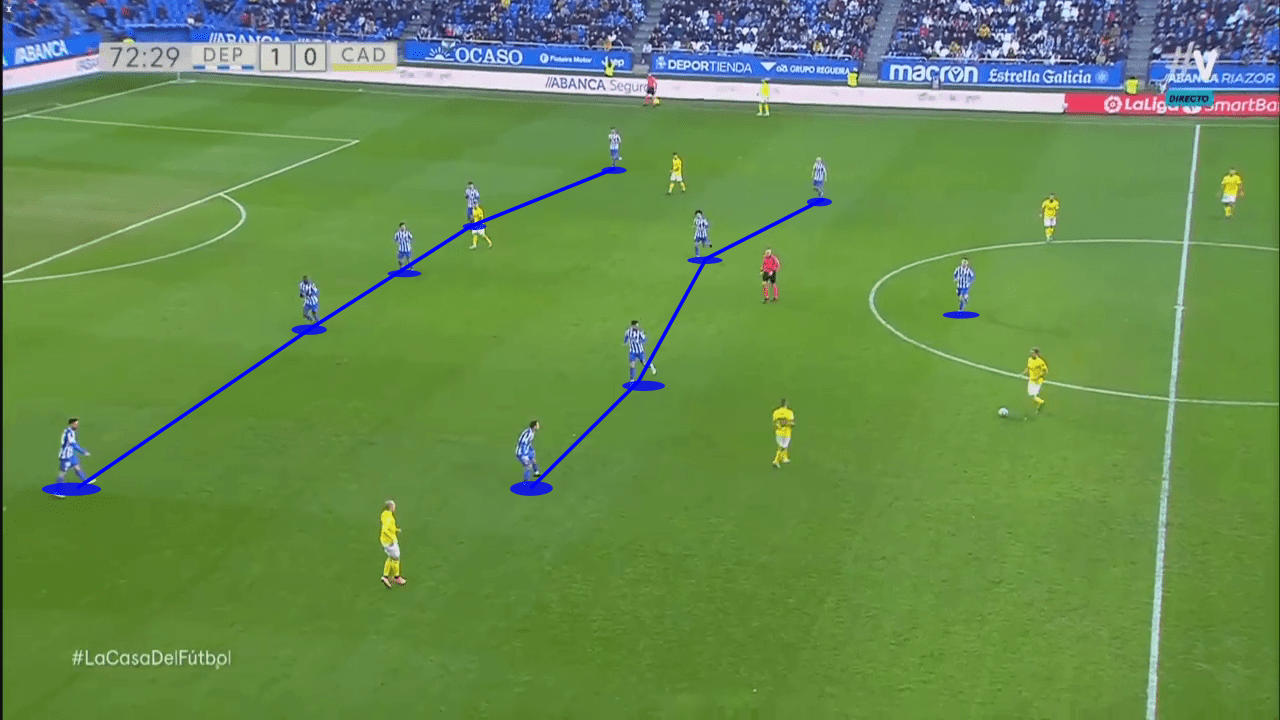
In midfield, Vázquez may have been a little lucky to find players so well suited to his system. One more than any other seems a natural fit in the form of Atlético Madrid loanee Víctor Mollejo. Built into the Diego Simeone system of a wide midfielder who gets forward without forgetting his defensive responsibilities, Mollejo offers the kind of flexible connection between midfield and attack. On the other flank, Ager Aketxe is perhaps less of a natural fit given his more offensive style, but does offer more in experience and in terms of how developed his play is.
In between the two wingers, Gaku Shibasaki and Peru Nolaskoain are the two first choice options, with Alex Bergantinos offering a more defensive alternative and Emre Colak bringing in a more offensive option. Gaku and Peru both come from sides, Getafe and Athletic Club, with similar approaches to grinding out results in a physical midfield battle. Well-stocked in this area of the squad, Vázquez has the flexibility to adapt.
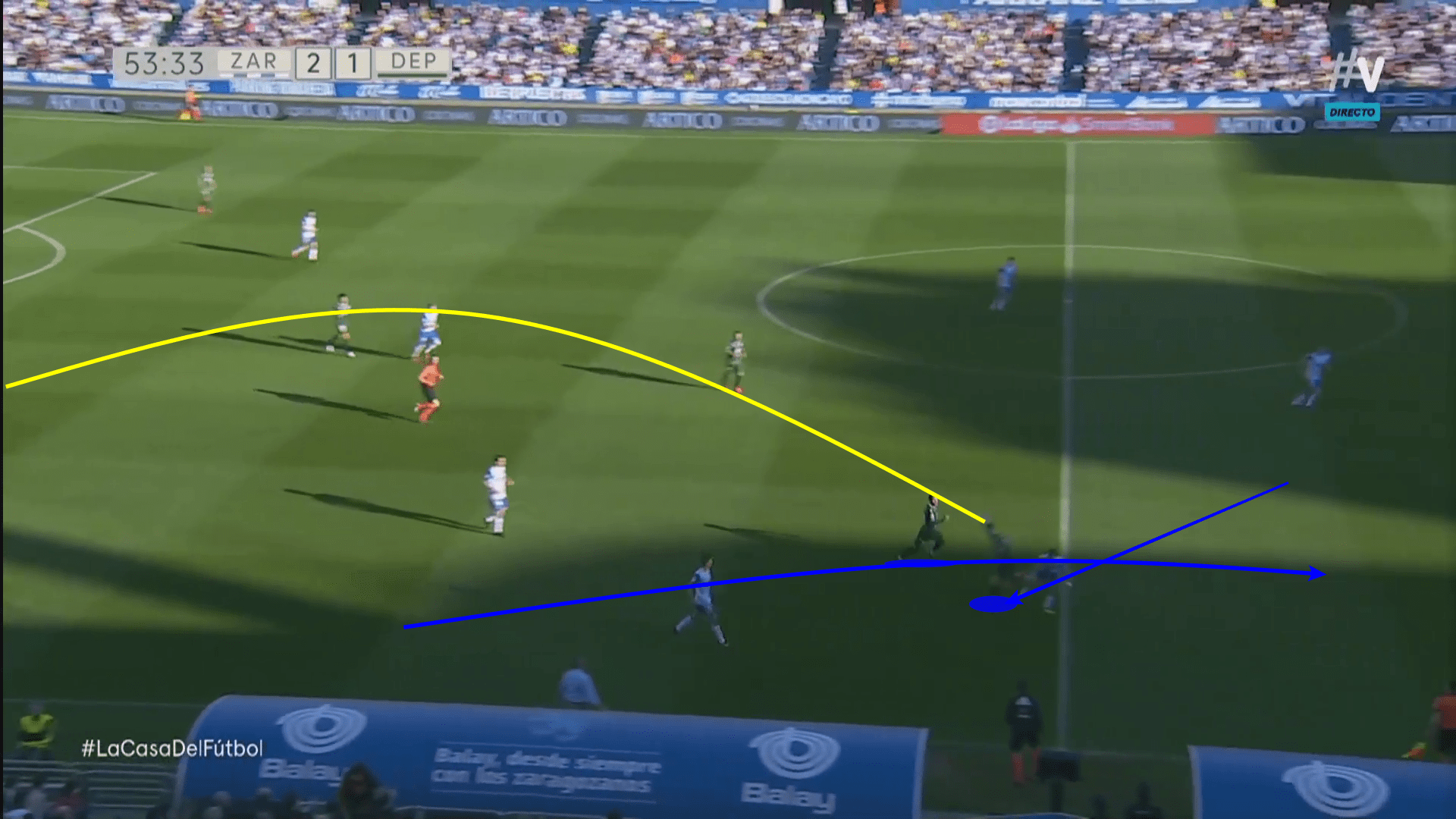
In attack, Sabin Merino leads the line. A versatile target man, he’s good in the air despite using his pace and movement more than his physicality. He offers an option for the long ball and an escape route, but not in the mould of Borja Bastón as was the case during Vázquez’s previous stint at the club. Rather than being a more stationary figure, his role is built around his mobility and chasing the ball into wide channels and over the top, with the wingers then overlapping to provide cover.
All focus on defence
Despite the fantastic results since Vázquez’s appointment, they have never come through prolific attacking play. The 5-4-1 formation has given his team an impressive defensive ability which has helped them to see out results. In such a rigid structure, the team are very hard to break down which represents one of the fundamental pillars that Vázquez has looked to build this team around by ensuring that they can maintain their shape at all times, dropping deep when required and only pushing up when in possession and safe to do so.
As can be seen here from this example against Lugo, Vázquez’s men have no problem dropping into a deep possession. Their challenge intensity of 6.2 duels, tackles and interceptions per minute of opposition possession is among the lowest in the league, reflecting the way in which they frequently revert to 10 men in their own final third, often almost all of them being in their own penalty area, set up and ready to defend by frustrating the opposition and allowing them to have the ball and try to find a space which doesn’t exist.
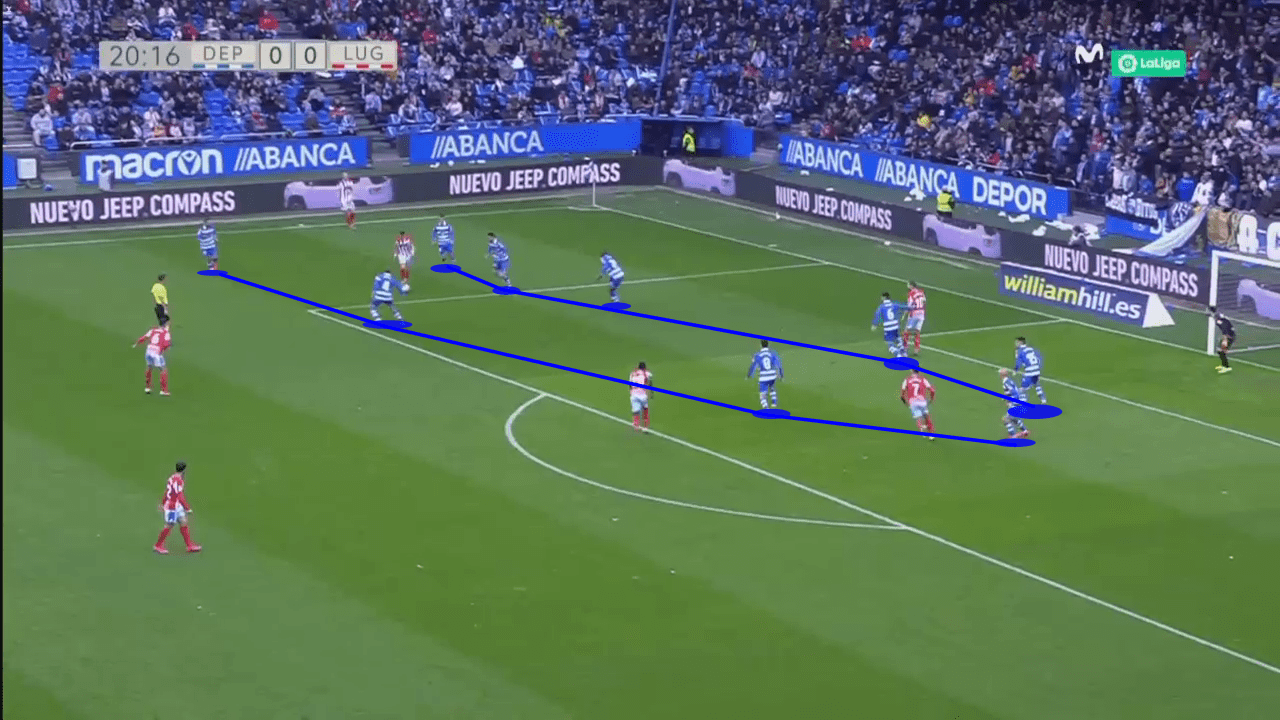
This is of particular importance when they take the lead, often late on in games with the majority of the goals in Vázquez’s reign (64%) having come in the second half. Deportivo are more than capable of sitting deep in a low bloc to see out a result. The win over Cadíz, the leaders of the division at the time, was the perfect example. After Merino opened the scoring after 65 minutes, the team sat back into their own third for almost the entirety of the remaining 35 minutes of the game.
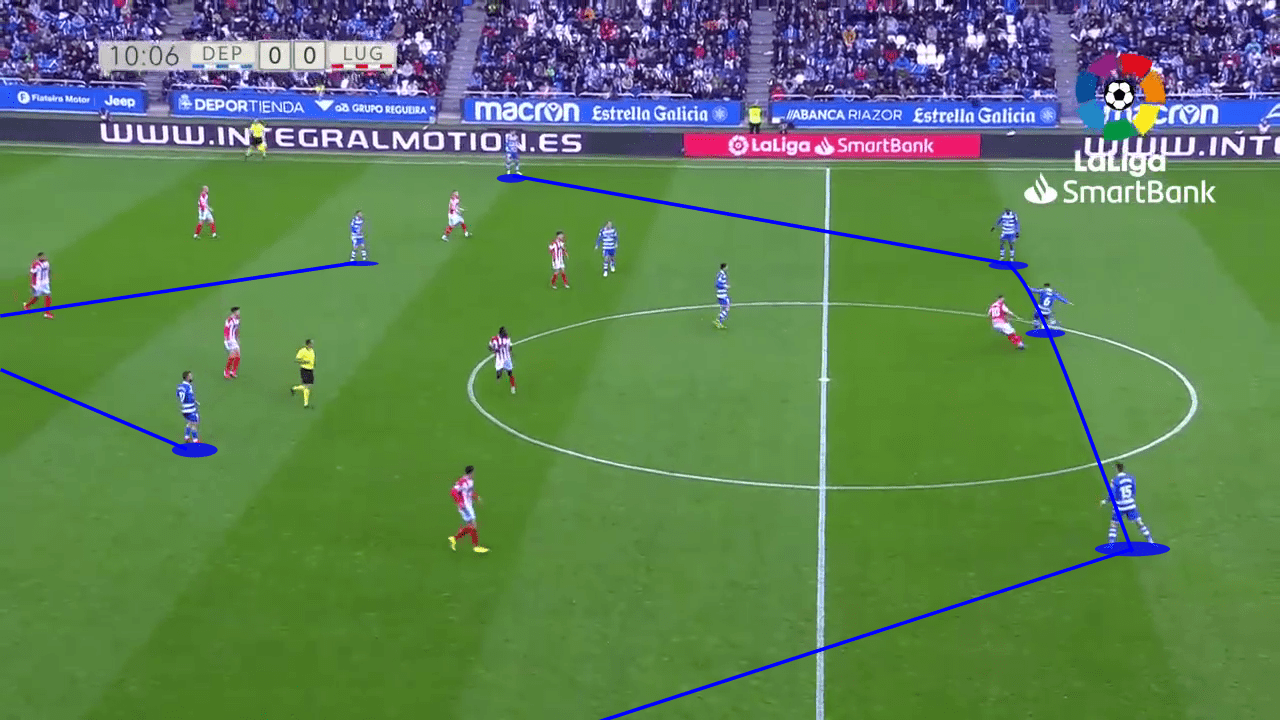
At the same time, it is worth noting that there is an offensive role played by the defence. When on the ball and moving forwards, the formation resembles more of a 3-4-2-1 shape. The two full-backs press on to act as wing-backs, with the wingers from the midfield block drifting centrally in order to provide greater support to Merino and get in and around the box. Boveda is Deportivo’s most frequent crosser since Vázquez’s arrival and that is entirely down to this role, bypassing the midfield to receive the ball from the back three, burst down the line and put a cross into the box.
This focus makes sense for Vázquez, building a side around solid foundations. In order to regain confidence, it was the logical approach. Instilling a sense of discipline into a side with an incredibly young defence is no easy task, but with experienced figures in goal and in midfield has made it a much easier task.
Capitalising on chances
In January, Vázquez made it clear that his team needed a centre-forward. Lacking the kind of target man that his style demands, he was reliant upon Mollejo playing out of position in a central role in his debut fixture. That was a key factor in what influenced the club to invest in order to bring in Sabin Merino from Leganés on a free transfer.
Merino came in and his role was immediately clear. In his first four games, he scored four goals and to date has registered four goals despite having an xG as low as 1.81, reflecting his clinical nature in front of goal. This reflects the nature of Deportivo, who have outscored their xG substantially since the arrival of Vázquez, with 11 goals scored compared to 7.89 xG. In fact, since his appointment the team have only surpassed the season average of 1.04 xG per game in three games.

To date, Deportivo have only registered more shots than their opponents in two games from 10, only one of them actually ending in victory. That is not surprising given just how reluctant the midfielders are to join Merino in attack. Often he is an isolated figure expected to hold up play and wait for a midfield runner, typically a winger, to join him and support. It is only truly when Deportivo are in possession and comfortable that they commit men to the attack.
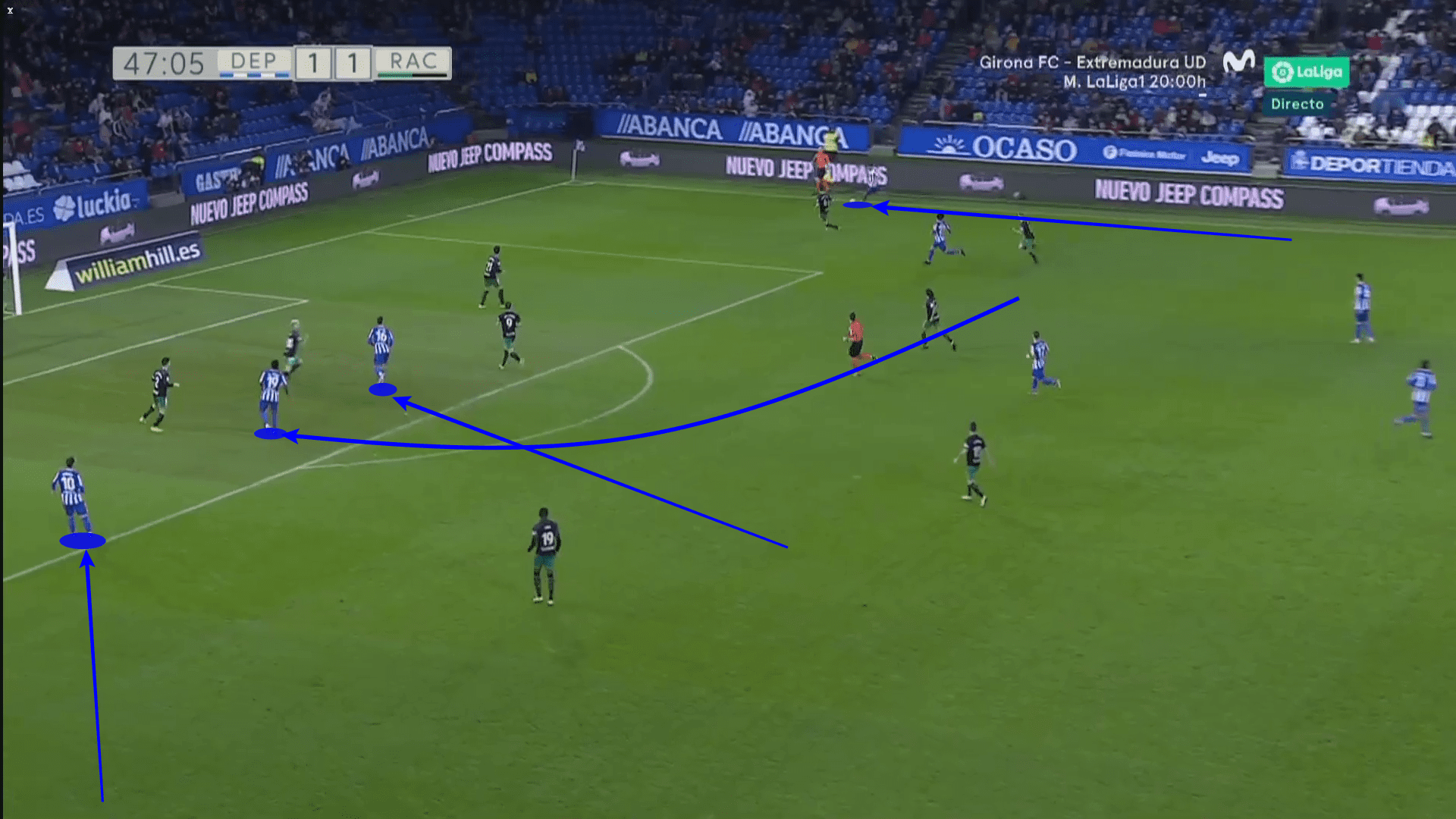
Whilst the one in attack formation may seem to isolate Merino, it is not the case. As referenced previously in this analysis, the full-backs play a key offensive role. As such, the wingers have greater freedom to move into the box and attack the final third almost acting like a front three. That means that by the time a cross comes in, Depor are able to match the number of defenders in the box with attackers, with the front three often interchanging in order to provide an unpredictability to their movement.
There is certainly nothing revolutionary about Vázquez’s attacking approach, rarely committing more than these three attackers to the final third, but it is one which is getting results. Sustaining this in the long term, as has already been seen may be a challenge as the goals have dried up for Merino, will be the true test of the quality of this side and Vázquez’s system
Set pieces
Perhaps one of the most intriguing moments of Vázquez’s reign since his return came when the tide turned against Depor. A draw against Girona and defeat to Real Zaragoza saw the team concede four consecutive goals from set pieces, which drew criticism from fans and rivals alike. “The way we defend set pieces is good because it produces statistically good results,” the coach insisted post-match.
And he’s right. Whilst those four goals did lead to the loss of five possible points, their return of four goals from such occasions in the past eight games before that since Vázquez’s appointment helped to secure an even more impressive 15 points. Whilst the points lost may be a concern, those gained more than make up for it, particularly considering the nature of the team climbing away from the bottom.
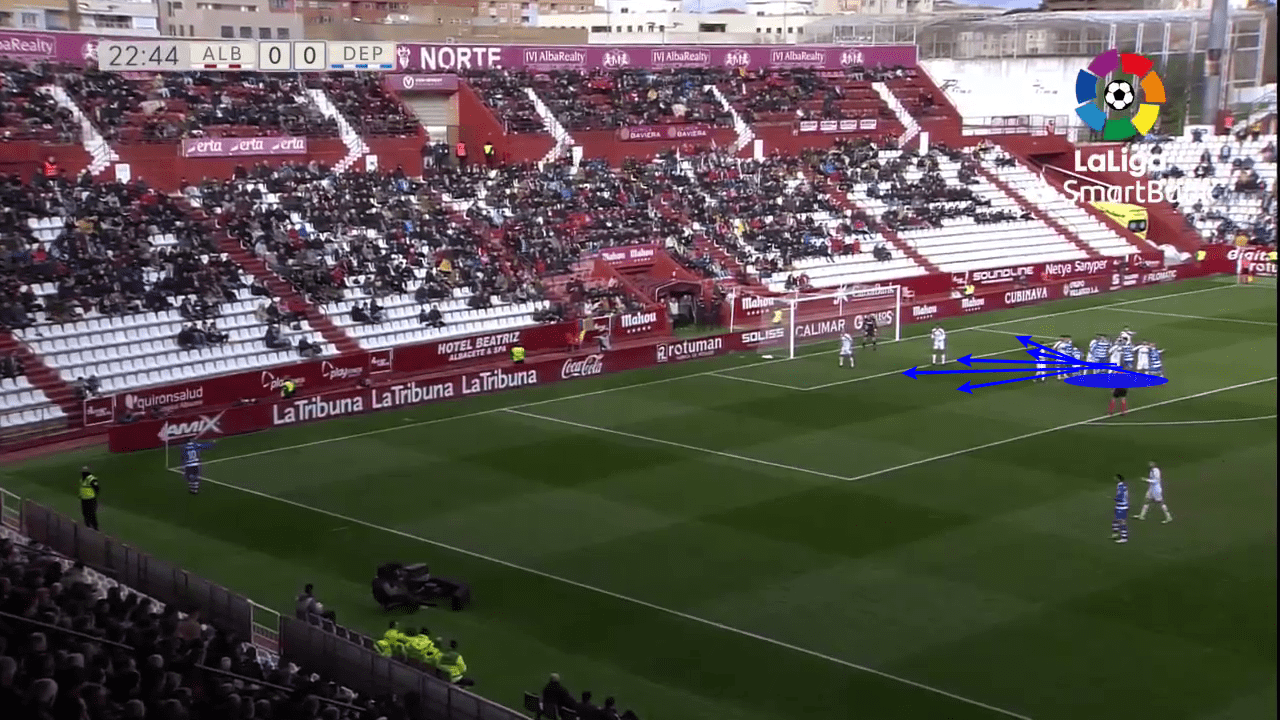
It is worth noting here that Depor win more corners than only two other teams in Segunda, but their way of making the most of them is impressive. Using a simple tactic of crowding to surround every player in one single straight line on the penalty spot, they then spark their runs as the cross is delivered, creating confusion and allowing the runners to mix and match their run each time and leave sides who man-mark baffled.
Capitalising on this strength is crucial as Depor rank fourth for aerial duel wins in the division, with a 50.7% success rate, and corners reflect a way that they can turn this strength into goals. Vázquez has evidently identified that and looked to make the most of it early on in his reign at the club.
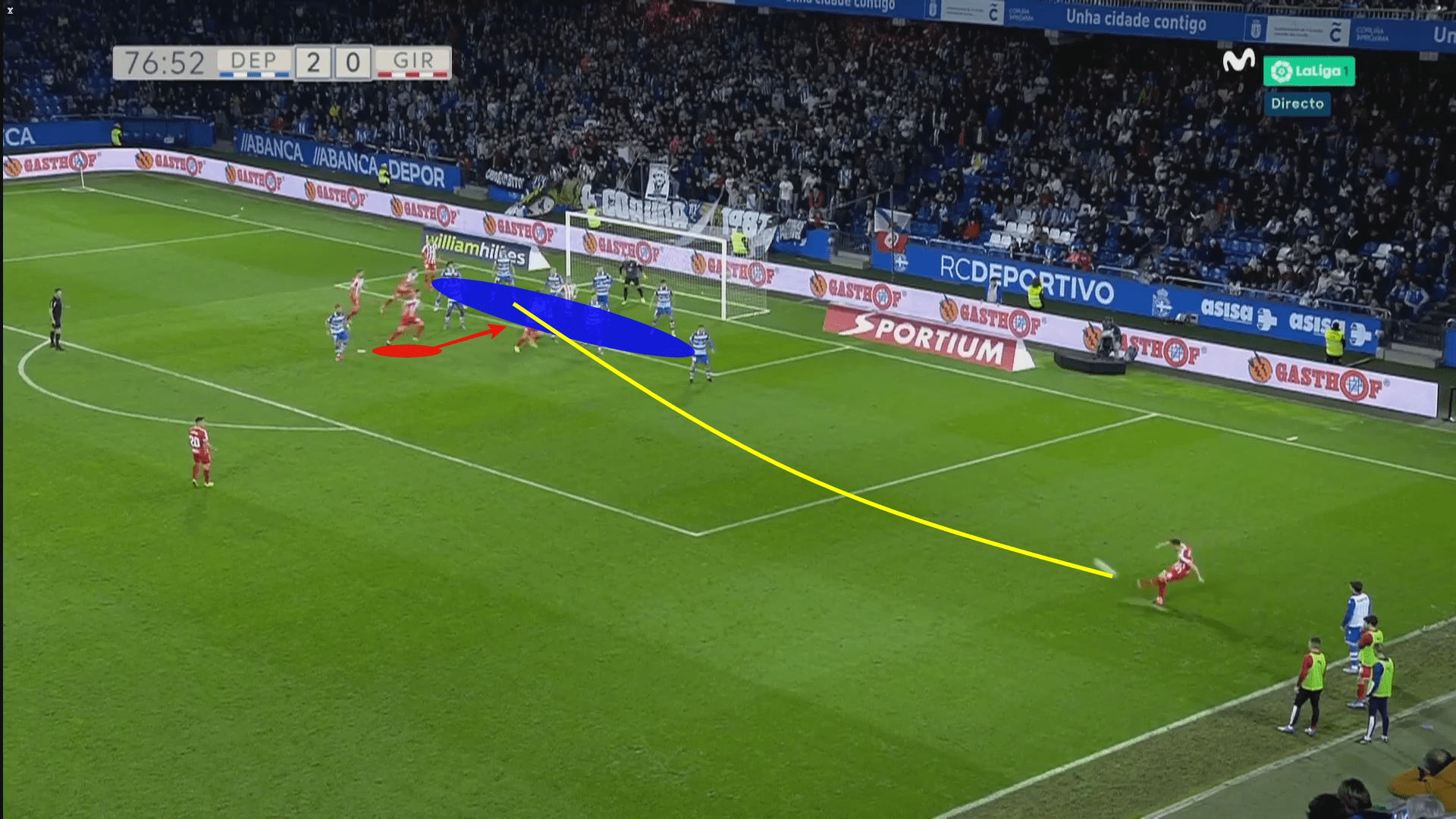
Their defensive vulnerabilities have been evident in recent games though. Their set-up whilst defending corners and free-kicks has left somewhat to be desired. As can be seen in the example here against Girona, their defensive line is so deep that Girona’s runners arrive with the delivery on the edge of their six yard box with so much momentum that it is easy work for them to convert. This was a repeated feature both against Girona and Real Zaragoza, which will give Vázquez a key area to work on when at the training ground.
Conclusion
Vázquez’s Deportivo La Coruña are the definition of clinical. Their early form under their new coach has certainly shown all the signs of a honeymoon period which can be hard to maintain over a sustained period. However, it has shown that Vázquez has given this side their belief back and has helped to get the very best out of a somewhat limited group of players.
His focus on 5-4-1 undoubtedly focuses on the practical. This team is built to grind out results. They don’t play attractive, eye-catching football. They look to take a point and anything extra is a benefit. When stuck in a relegation battle as Deportivo have been all season, that is just the approach that they have been crying out for.
“When you play football, you play to win. Then from there you look to improve. We’re defensively strong, not so much in attack. The objective is above the style, in general, fans just want Depor to win,” Vázquez said, summing up his approach perfectly. Yet that quote came from his first stint in charge in 2014. A stint which ended with promotion. After his impressive start this time around, already seemingly having salvaged Deportivo from the abyss, that may be the next target.





Comments